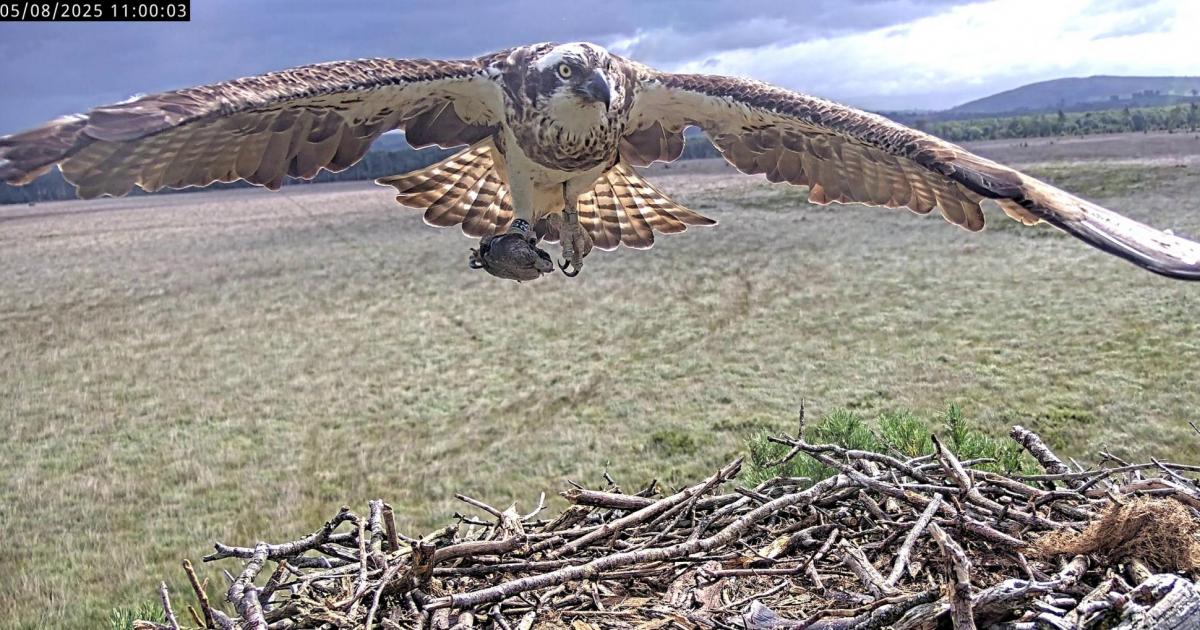Cumbria Wildlife Trust, who manage the site, believe the female, ‘Blue 35’, departed around August 5 – the last time she was seen on the reserve’s live cameras.
Ospreys navigate thousands of miles using instinct, landmarks, and thermal air currents. They fly solo between breeding and wintering grounds.
They often stop to rest and feed along coasts, rivers and wetlands.
The journey, often taken mid-to late-August by the mum, will be an arduous one and she was last spotted swooping to catch a fish and flying off – perhaps readying herself for the trip.
Female ‘Blue 35’ and male ‘White YW’ in the nest last year (Image: Cumbria Wildlife Trust) ‘Blue 35’ and her partner ‘White YW’ have been returning to the reserve after they first appeared in 2013.
Each summer they have raised chicks before embarking on their separate migrations to Africa.
This year’s brood – three healthy youngsters – are expected to begin their own journeys within the next couple of weeks with White YW likely to leave around the beginning of September.
In a Facebook post, Cumbria Wildlife Trust said: “What an amazing job she’s done, once again. A round of applause for Blue 35
“We expect the youngsters to leave within the next couple of weeks, with dad going around the beginning of September. You’ll still spot them here and there on the cams.”
Fledging 7K2 ready for take off (Image: Cumbria Wildlife Trust) All three young ospreys from nest one at Foulshaw Moss successfully fledged last month, marking the final stage of their time at the reserve. First to take to the skies was 7K2 on July 9, followed by 7K1 on July 12, and finally the youngest, 7K0, on July 19.
Youngest chick 7K0 had a challenging start, often blocked from feeding by his sister, 7K1. Despite being the smallest, he has shown determination, securing his share at mealtimes since fledging.
The chicks have been seen perching nearby and returning to the nest for meals provided by their father.
Ospreys typically leave the nest between 50 and 60 days old, with males often flying first.

